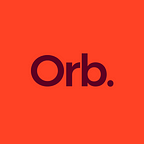With record figures of investment last year, Fintech challenger brands have gone mainstream and their secret weapon — transparency.
Fintech emerged to fill the vacuum left by the inadequacies of archaic banks and that small mess they made called the Great Recession of 2008. As a result of the financial crisis, traditional banks faced a barrage of inquiries. Consumers demanded clarity on their investments and choked on their muesli while reading about substantial banker bonuses in their morning newspaper. The banking sector was in crisis. Out of this crisis came opportunity and the culture of consumer mistrust resulted in demand for a more honest alternative.
The soaring success of Fintech challenger brands
Speaking directly to the future-facing, digital native Millennials, Fintech (namely online banks and payment gateways) are on a mission to revolutionise the way people use money and transact with businesses. Fintechs are classic challenger brands. They entered a market to disrupt it, and they’re smashing big banks out of the park. Examples like Starling, Thought Machine and JAJA are some of the fastest-growing in the UK right now.
Fintech companies continue to attract ever-increasing levels of investment. Last year the industry broke its investment record, with $4.9 billion of capital raised. This figure surpasses the already tremendous $3.6 billion from 2018. These numbers catapult the UK to second place in the global rankings for venture capital investment. So they’re doing something right. A big part of that something is transparency.
What does transparency mean in Fintech?
With AI integration, unrivalled data analysis and blockchain developments, there are an array of elements that play a role in improving visibility across Fintech products.
Their incredible features and interfaces speak to modern life in a way traditional banks can’t keep up. They answer functional needs as well as consumer demand for overall financial clarity, and there’s no shortage of them popping up and filling in the gaps with transparent technological innovations.
Monzo is an excellent example of a successful Fintech that many people will now recognise. Their rise was as a result of a fantastic word of mouth campaign and the secret weapon in its success is the outstanding level of brand transparency in every aspect of its business. Monzo has an entire section on its website called the transparency dashboard. The dashboard covers Monzo’s stance on everything from how they invest your deposits, to their brand’s tone of voice. And it’s constantly evolving (like any brand should). Their vision articulates this beautifully.
“Over time, transparency becomes the norm, and we create a burden of secrecy”.
When you compare Monzo’s unrivalled openness with that of a bank like Barclays, who also have a reported historical role in the slave trade, there really is no competition.
Fintech companies are topping all of the comparison websites, making them the best option for modern consumers. Traditional banks just can’t keep up with these fast-paced smaller startups. Fintechs can launch a new feature before Gerald from Natwest’s product development team has even put his NPD request in.
Transparency, and then more transparency
Increased visibility in Fintech isn’t just about the eradication of hidden fees, investment clarity, and payment tracking — it’s also about the companies’ pay and welfare policies for their workers. It’s about the action the companies take to minimise their impact on the environment, and what they give back to society.
The convergence of technology and brand transparency is speaking to the masses who are looking for businesses with integrity, and people they can trust with their money. These developing values and expectations mean the trends around transparency are increasingly gaining ground, with customers demanding higher levels of visibility in finance and beyond.
What can be learnt from the Fintech disruptors?
Brand transparency is being expressed successfully across different sectors and industries, from Patagonia’s clarity on their clothing supply chains to Buffer’s publication of their workers’ pay. The clock is ticking as consumers get used to these high levels of honesty and start to expect it in every aspect of every business they engage with.
Fintech is finally shaking up the stale and archaic banking industry by directly addressing consumers’ concerns and challenges. This communication clarity is working hard to build consumer confidence back, and when you’re handling people’s life savings or hard-earned salaries, this trust exercise is essential.
By being proactive and providing brand transparency, companies can establish genuine relationships and avoid the mistrust that has arisen from the legacy brands of the past.
Whether you’re a market leader that wants to future proof your business or a disruptor looking to challenge the status quo, you need a brand that connects with your customers. Contact Orb to find out how we can help your brand achieve that and more.
